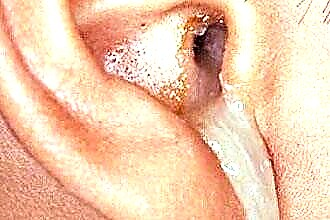Epistaxis, or nosebleeds, is the result of injury or abnormalities in the body. When it is episodic, then you just need to stop the blood, if necessary, seek help from a doctor. However, it happens that serious illnesses lead to the appearance of a problem. In this case, relapses are observed, and treatment of nosebleeds with the use of professional help is required.
What provokes a violation
 Many factors can trigger nosebleeds. It appears from a violation of the integrity of the skin, mucous membranes and bone tissues. However, there are also serious systemic diseases that lead to the appearance of the problem. If the blood from the nose flows due to a problem in the cavity itself, then this condition is a consequence of the influence of local factors, such as:
Many factors can trigger nosebleeds. It appears from a violation of the integrity of the skin, mucous membranes and bone tissues. However, there are also serious systemic diseases that lead to the appearance of the problem. If the blood from the nose flows due to a problem in the cavity itself, then this condition is a consequence of the influence of local factors, such as:
- mechanical irritation of the mucous membrane (acute respiratory infections, acute respiratory viral infections, rhinitis, allergies and other inflammatory diseases);
- strong sneezing;
- polyps;
- angiomas and other neoplasms in the nasal cavity;
- injuries and bruises;
- atrophic rhinitis, which is accompanied by exhaustion and drying out of the nasal mucosa.
Common causes of epistaxis:
- violation of hormonal regulation (diabetes mellitus, etc.) leads to the loss of the elasticity of the vessels and capillaries of their fragility and inability to narrow;
- emphysema of the lungs, which is associated with an insufficient supply of cells and tissues with oxygen, causes an overload of the venous system in the upper respiratory tract;
- hypertension, in which bleeding through the nose is a protection against overloading of the cerebral vessels and stroke, works effectively, but can lead to a sharp drop in blood pressure and acute heart failure;
- leukemia, in which the functions of the hematopoietic system are impaired;
- oncological neoplasms, especially those located in the bone marrow, cause nosebleeds;
- severe liver and kidney disease, which cause sudden changes in blood pressure;
- hormonal imbalance, especially common in women during menstruation in adolescence and pregnancy;
- long-term use of vasoconstrictor nasal drugs leads to drying and depletion of the mucous membrane, increased fragility of blood vessels and capillaries;
- long-term use of drugs that thin the blood, dulls the ability of blood vessels to narrow, which provokes nosebleeds.
Features of the choice of therapy
Self-treatment of nosebleeds is allowed only when providing first aid to the patient during epistaxis. Taking any medications, folk remedies or other measures is strictly prohibited. Only a doctor can choose the most suitable scheme for eliminating the problem. Sometimes the consultation of the otolaryngologist himself is not enough; additional examination by an ophthalmologist, endocrinologist and other specialists is required.
 Before treating the patient, laboratory tests are carried out, the reason is revealed, which led to the fact that the blood from the nose flows quite often. Depending on what became the provoking factor, the doctor chooses the most appropriate scheme for eliminating the disease itself, which caused the violation, and epistaxis.
Before treating the patient, laboratory tests are carried out, the reason is revealed, which led to the fact that the blood from the nose flows quite often. Depending on what became the provoking factor, the doctor chooses the most appropriate scheme for eliminating the disease itself, which caused the violation, and epistaxis.
Drug therapy
To find out how to strengthen the vessels in the nose so that the nose does not bleed, you need to visit an otolaryngologist. Depending on the degree of epistaxis and its location, different means of stopping the blood can be prescribed. They can be administered orally, intravenously and intramuscularly. Consider what drugs will help patients get rid of the problem.
| Name of funds | Mechanism of action and properties | Application features |
|---|---|---|
| "Calcium chloride" (solution 10%) | Strengthens the effect of drugs that stop blood, promotes vascular contractility and increases their impermeability. | Take 1 or 2 teaspoons before starting the main course of treatment, it is recommended for moderate to light bleeding. |
| "Ditsinon" (solution 12.5%) | Stops nosebleeds, stabilizes platelet function. | The course can last for a long time, since the drug does not affect blood clotting, it is administered intravenously or inside. |
| "Vikasol" | Acts as an enhancer of bleeding agents. | It is administered intramuscularly, the course lasts no more than 4 days. |
| "Aminocaproic acid" | Enhances blood clotting, which helps stop nosebleeds. | It is administered intravenously, if there is a violation of blood clotting, the use is prohibited, as it can lead to the formation of blood clots. |
| Vitamins A, K and C | They increase the elasticity of blood vessels and capillaries, improve their contraction, and have a positive effect on hematopoiesis. | The course of administration and the method of administration are chosen by the doctor. |
Surgical intervention
 If the use of drugs to stop blood and improve the functioning of blood vessels does not help, then treatment with surgery will help eliminate nosebleeds. Now there are several methods for solving the problem, they are selected depending on the severity of the disease and the characteristics of the patient's body. Let's consider them in more detail.
If the use of drugs to stop blood and improve the functioning of blood vessels does not help, then treatment with surgery will help eliminate nosebleeds. Now there are several methods for solving the problem, they are selected depending on the severity of the disease and the characteristics of the patient's body. Let's consider them in more detail.
- Cauterization. It is carried out quite simply, it is used if the blood from the nose is not strong. The essence of the technique is that a cotton pad moistened with 40% silver nitrate or trichloroacetic acid is inserted into the nasal passage. Before the procedure, the nasal cavity is anesthetized with local drugs. Moxibustion leads to the formation of crusts that stop the bleeding.
- The introduction of vasoconstrictor drugs under the mucous membrane. This method allows you to stop the bleeding from the nose if the site of the lesion is known. Localized under the mucosa is injected with a needle "Lidocaine" or "Novocaine". It helps to cure epistaxis.
- Excision of the mucous membrane. If nosebleeds are frequent, treatment is carried out using local interventions. Detachment of the depleted mucosa helps to remove weak points that are constantly traumatized and lead to epistaxis.
- Electrocoagulation. Local cauterization of blood vessels with current also gives positive results with frequent relapses of epistaxis in the anterior part of the nose. The procedure is performed in a clinic or hospital, in front of it the nasal passages are anesthetized.
- Radio wave arresting of thin vessels. The procedure is considered one of the most painless and effective, as it does not give complications and does not take much time.
- Cryodestruction. Freezing the affected mucous membranes with liquid nitrogen is also often used if a specific area of the passages is affected. Under the influence of ultra-low temperature, the tissues die off, but after that no scars remain on them, which prevents the appearance of synechia in the nose. The restoration of the mucous membrane is very fast.
 Laser moxibustion. A directed laser beam literally "evaporates" the affected areas of the mucous membrane, while it disinfects the mucous membrane and seals small vessels and capillaries. This prevents postoperative bleeding, the causes of which lie in the violation of the integrity of healthy tissues.
Laser moxibustion. A directed laser beam literally "evaporates" the affected areas of the mucous membrane, while it disinfects the mucous membrane and seals small vessels and capillaries. This prevents postoperative bleeding, the causes of which lie in the violation of the integrity of healthy tissues.- Ligation and clipping of vessels on the paranasal sinuses. If the causes associated with damage to specific vessels have caused blood from the nose, then they are simply clipped or bandaged. In some cases, mechanical destruction of the ethmoid sinus cells is also necessary.
- Ligation of the great vessels. In severe cases, this method is the only one that can give the desired results.Ligation of the internal jaw and external carotid arteries helps to stop severe bleeding.
Other methods
The causes and treatment of epistaxis are interrelated. Depending on what exactly caused the disorder, the attending physician may prescribe an effective therapy. It is important to find out what disease needs to be eliminated in order to get rid of the unpleasant symptom.
Let's consider what needs to be done in specific cases.
- With polyposis, surgical intervention is prescribed. Benign neoplasms are removed by different methods, most often non-invasive techniques are used to avoid affecting healthy tissues. After elimination of polyps, epistaxis completely disappears.
- In the chronic course of rhinitis, drug therapy is chosen, aimed at eliminating inflammation of the mucous membrane. For this, vasoconstrictors, antibiotics (if bacteria are the cause of the infection), antifungal and other drugs can be prescribed. The treatment regimen is chosen individually in each case, it is aimed at eliminating the main problem, strengthening the mucous membrane and blood vessels.
- In case of chemical lesions, the first stage of treatment is the elimination of contact with harmful substances. Next, the patient undergoes a course of treatment with special drugs and vitamin supplements (A and E), and he must also follow the diet prescribed by the doctor. After the restoration of the mucous membranes, the bleeding goes away on its own.
 In case of an overdose with blood thinners, the therapy is completely changed. It is forbidden to take such drugs for a long time, since they can cause not only epistaxis, but also any other bleeding, especially dangerous if it is internal.
In case of an overdose with blood thinners, the therapy is completely changed. It is forbidden to take such drugs for a long time, since they can cause not only epistaxis, but also any other bleeding, especially dangerous if it is internal.- For systemic diseases, complex therapy is prescribed. It can consist of drugs that eliminate allergies, inflammation, infections. Also, procedures are carried out designed to reduce the size or eliminate oncological neoplasms, if they are found in a patient.
Potential risks with improper treatment
Epistaxis cannot be ignored in any case, especially if it is prone to relapse. This condition can be hazardous to health as it causes severe blood loss. The hardest thing to assess the scale of the disaster is if the bleeding is posterior. In this case, the contents are not poured out of the nose, but drained into the stomach. Throwing in the gastrointestinal tract can provoke vomiting, which negatively affects the patient's well-being.
It must be remembered that blood flows through the nose also due to serious systemic diseases, and can also be a sign of oncological neoplasms. A complete examination must be completed without fail.
It is necessary to strengthen the walls of blood vessels using special procedures prescribed by a doctor. In some cases, surgical intervention is indispensable; now it is carried out using innovative technologies that give patients a minimum of discomfort.
In conclusion
 Epistaxis can cause various diseases and disorders in the body. It is possible to minimize the recurrence of bleeding or even get rid of them altogether with the help of a professional physician.
Epistaxis can cause various diseases and disorders in the body. It is possible to minimize the recurrence of bleeding or even get rid of them altogether with the help of a professional physician.
If you notice that the problem recurs at regular intervals, this is a clear sign that you should consult a doctor. After a detailed examination and study of the analyzes, the specialist determines what provoked the violation and how to deal with it.
It is important to undergo an examination on time and take measures to strengthen the vessels in the nose. Otherwise, another epistaxis can lead to severe blood loss and even death. You can prevent this terrible outcome by not ignoring medical attention.

 Laser moxibustion. A directed laser beam literally "evaporates" the affected areas of the mucous membrane, while it disinfects the mucous membrane and seals small vessels and capillaries. This prevents postoperative bleeding, the causes of which lie in the violation of the integrity of healthy tissues.
Laser moxibustion. A directed laser beam literally "evaporates" the affected areas of the mucous membrane, while it disinfects the mucous membrane and seals small vessels and capillaries. This prevents postoperative bleeding, the causes of which lie in the violation of the integrity of healthy tissues. In case of an overdose with blood thinners, the therapy is completely changed. It is forbidden to take such drugs for a long time, since they can cause not only epistaxis, but also any other bleeding, especially dangerous if it is internal.
In case of an overdose with blood thinners, the therapy is completely changed. It is forbidden to take such drugs for a long time, since they can cause not only epistaxis, but also any other bleeding, especially dangerous if it is internal.

